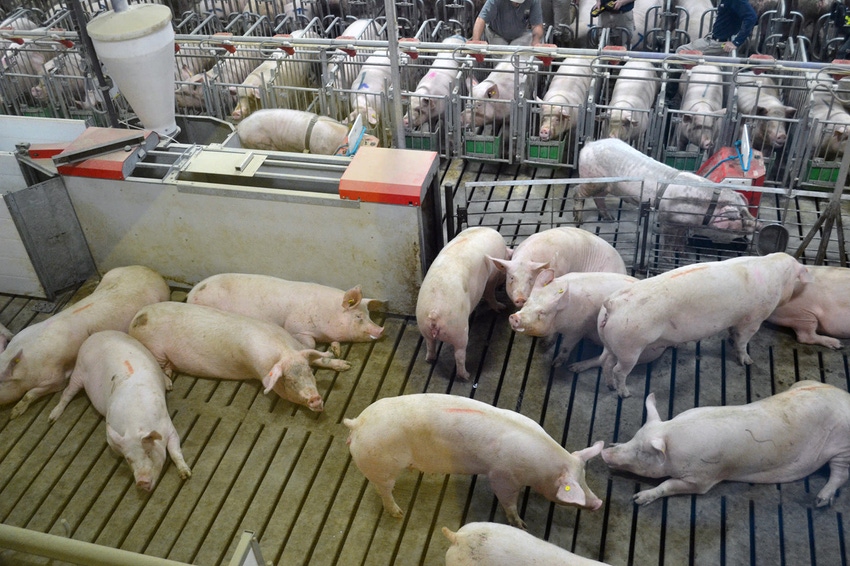Lowering sow mortality starts with strengthening labor
It’s the farms with lower female death losses that are also the ones that have well-trained staff and staff that have been there more than a year, Ketchem says.

In the past few years, Ron Ketchem has seen more and more swine systems dealing with increased female death loss and early female culling. Some of these farms are older, some are brand new, but the overarching problem they all seem to share is labor.
“We’ve got to get people back in that care about raising these pigs or we are not going to solve these problems,” says Ketchem, Swine Management Services LLC.
During his presentation, “Low sow mortality: What’s the secret?” at the American Association of Swine Veterinarians annual meeting this week, Ketchem points to lack of labor for the reason basic swine management practices are being dropped from daily routines. For example, if regular washing in the building is not occurring, then the system will begin to have more slick, dirty floors, setting the stage for more injuries and lameness and increases in abscesses and joint infections.
It’s the farms with lower female death losses that are also the ones that have well-trained staff and staff that have been there more than a year, he says. Ketchem has one farm right now that has been operating for 18 months and only has three people that have been there a year.
Ketchem is often asked what can be done to lower female death loss. He suggests the industry focus on these 13 areas, with labor being at the top of his list:
Increase local, state and outside U.S. programs to find more labor for farms.
Provide continuous training for employees through online training, local colleges and onsite standard operating procedures.
Training of health crew on how to spot sick or lame females with daily inspection of all females every day.
Have written SOPs for how to handle and treat sick and lame females.
Post list from farm veterinarian on what medication to treat sick or lame females with and stated withdrawal times.
Have someone accountable for treatment records and euthanization of problem females.
Record detailed information on each treated female and keep for 12 months (Pork Quality Assurance and Common Swine Industry Audit required).
Spend money for on-site gilt development unit and labor to run.
Proper feeding of developing gilts; not finisher diets.
Implement regular testing of feed for mycotoxins and consider adding binders for control of mycotoxins.
Selecting gilts with better underlines, and feet and leg structure.
Inspect feet and dew claws regularly, and if needed trim toes and dew claws.
Improve all nutrition diets for feeding sows in gestation and lactation periods.
About the Author(s)
You May Also Like




